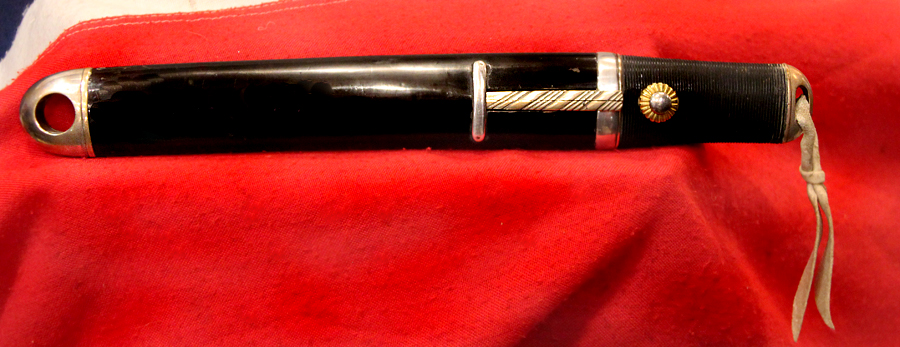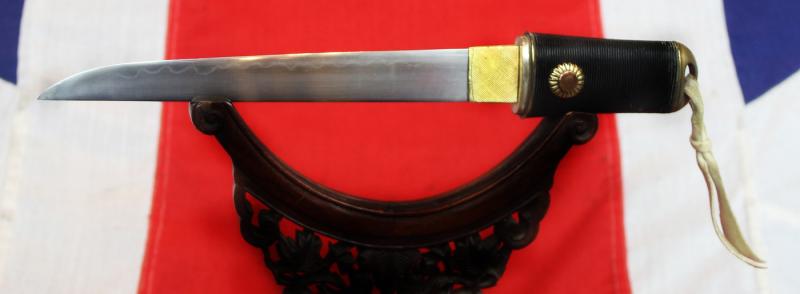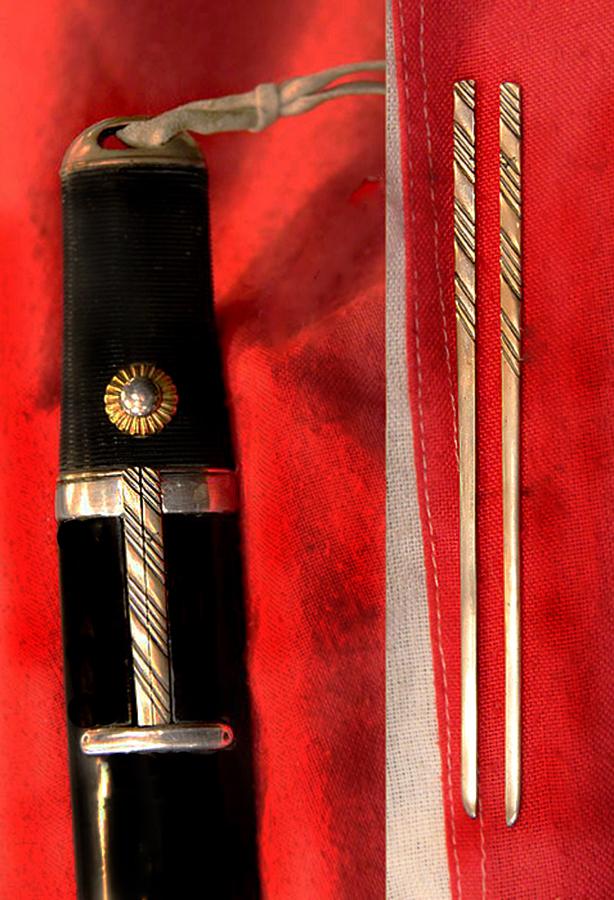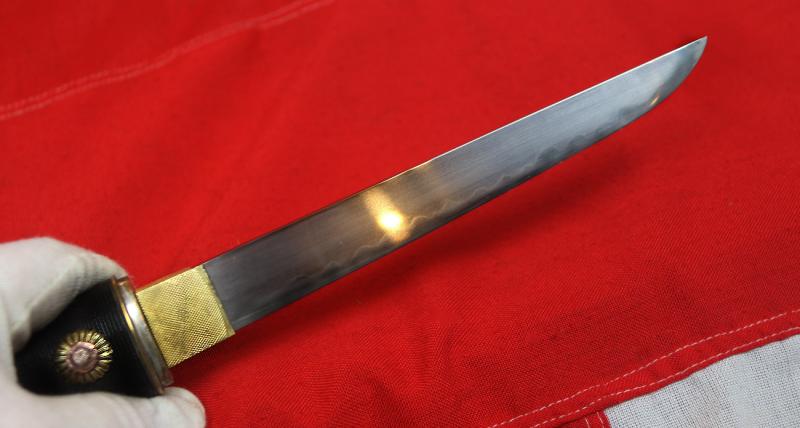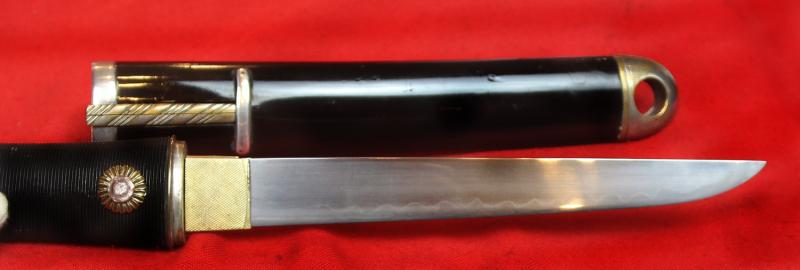A Fine Japanese Shinto Aikuchi Tanto, Made Over 240 to 300 Years Ago, During the Edo Period, With Old Edo Silvered Fittings & A Very Fine And Beautiful Blade
An extremely sophisticated and elegant tanto, of stunning simplicity. With silvered twin kogai
The kogai is actually two pieces ("warikogai") that can be used as chopsticks. The tsuka bound in thin strands of beleen. It has a hammered chequered pattern pure gold foiled covered habaki, blade collar.
The beautiful blade has a very fine deep, gunome undulating hamon. it has gilt chrysanthemum mekugi ana roundels.
All the original fittings are Edo period, as is the urushi lacquer saya. Japanese lacquer, or urushi, is a transformative and highly prized material that has been refined for over 7000 years.
Cherished for its infinite versatility, urushi is a distinctive art form that has spread across all facets of Japanese culture from the tea ceremony to the saya scabbards of samurai swords
Japanese artists created their own style and perfected the art of decorated lacquerware during the 8th century. Japanese lacquer skills reached its peak as early as the twelfth century, at the end of the Heian period (794-1185). This skill was passed on from father to son and from master to apprentice.
Some provinces of Japan were famous for their contribution to this art: the province of Edo (later Tokyo), for example, produced the most beautiful lacquered pieces from the 17th to the 18th centuries. Lords and shoguns privately employed lacquerers to produce decorated samurai sword saya and also ceremonial and decorative objects for their homes and palaces
The samurai tanto is commonly referred to as a knife or dagger, although in technical Japanese terms it is still a sword, however short. The blades of tanto can be single or double edged with a length between 15 and 30 cm (6-12 inches, in Japanese the length of 11.8 inches is called 1 shaku).
The tanto was designed primarily as a stabbing weapon, but the edge can be used for slashing as well. Tanto are generally forged in hira-zukuri style (without ridgeline) as is this one, meaning that their sides have no ridge line and are nearly flat, unlike the shinogi-zukuri structure of a katana. Some tanto have particularly thick cross-sections for armour-piercing duty, and are called yoroi toshi.
A very small gold foil area of the habaki now lacking. The old urushi lacquer on the saya has very small old contemporary wear marks etc.
Overall 12.5 inches long, blade around 8 inches long
Code: 22202
3550.00 GBP


